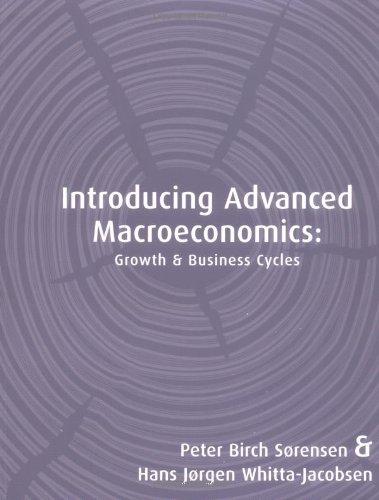Exercise 9. Further empirically testing the steady state prediction of the basic Solow model This exercise anticipates
Question:
Exercise 9. Further empirically testing the steady state prediction of the basic Solow model This exercise anticipates some issues taken up in succeeding chapters, and it is a very useful empirical exerc se. The data you will need can be taken from Table A. In Figs 3. 7 and 3.8 we tested the steady state prediction of the Solow model by plotting, across countries, GDP per worker in 2000 against investment rates (averaged over 1960 to 2000) and population growth rates (also averaged over 1960 to 2000). We concluded that the directions of the empirical relationships were nicely in accordance with the basic Solow model. However, the steady state prediction of the Solow model is more precise than 'y* is increasing in s and decreasing inn': as shown by (38), there should be a linear relationship between lny* and Ins - ln(n + c5), and the slope in this relationship should be o./(1- a).
Test this by creating a figure that plots In yi against Ins;- ln(n; + c5) across countries i
(with data quality higher than grade D), using for yi, s; and n; the same data that were used in Figs 3. 7 and 3.8 (appearing in Table A), and setting c5 = 0.075. Does the relationship (by reasonable standards) seem to be a linear one? Estimate (by OLS) and draw the line of best fit through the points. What is the estimated slope of this line? How does this slope accord with the theory?
Step by Step Answer:

Introducing Advanced Macroeconomics: Growth And Business Cycles
ISBN: 9783031200922
1st Edition
Authors: Peter Birch Sørensen, Hans Jørgen Whitta-Jacobsen






